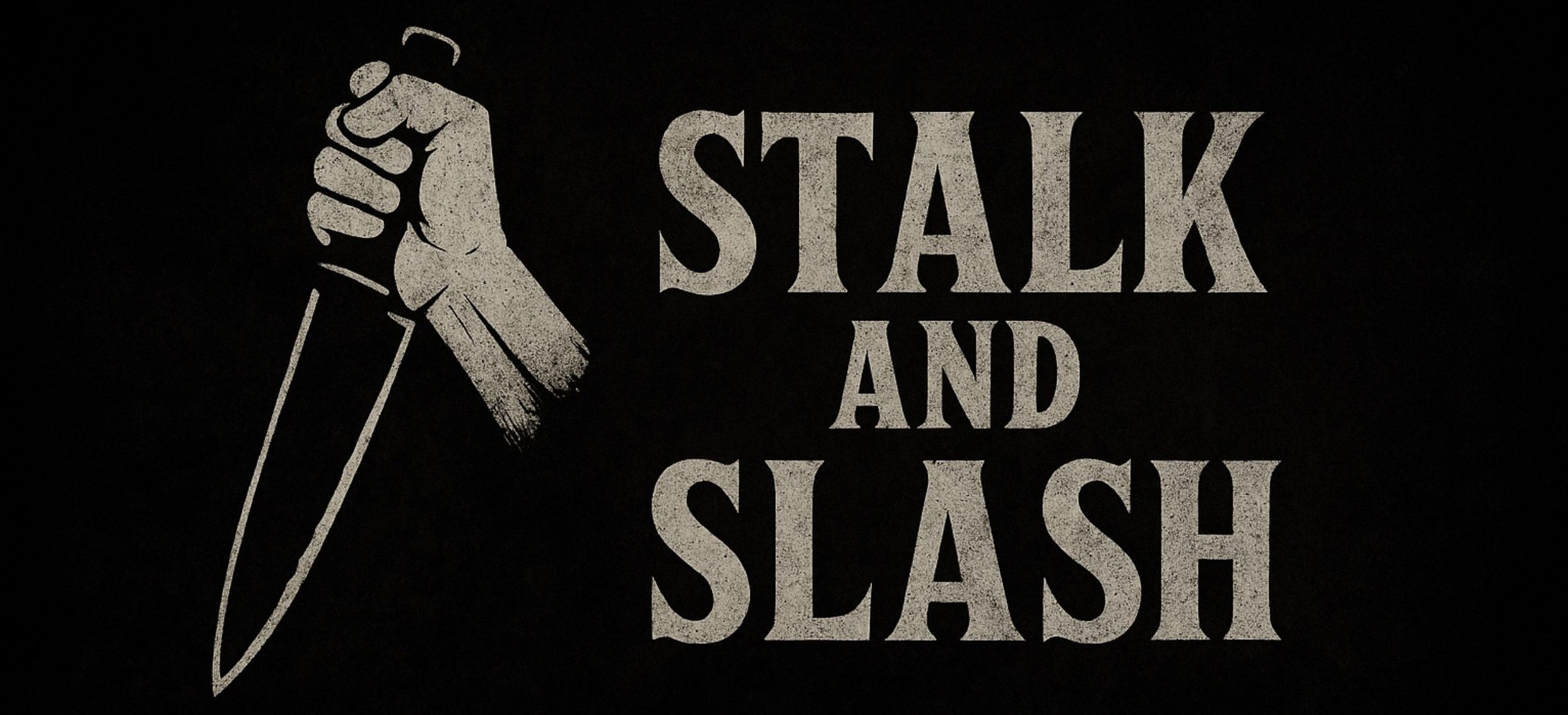
First Appearance: The Prowler (1981)
Portrayed by: Farley Granger (as Major Chatham), Tom Bray (killer), and Peter Giuliano (in suit)
Kill Count: 9 (on-screen in original film)
Tier: Third Class
Who Is the Prowler?
The Prowler is the silent, masked killer of The Prowler — a World War II soldier turned vengeful murderer, also known to fans as “Rosemary’s Killer.” After receiving a breakup letter from his girlfriend Rosemary while overseas, he returns home from the war and kills her and her new lover at a graduation dance, dressed in full combat gear.
Decades later, the same killer emerges again — in the same uniform, with the same bayonet — when the town holds its first dance since the murders. His face is hidden by a military helmet and combat gear, and his methods are brutal, personal, and precise. The Prowler doesn’t chase. He stalks… and strikes.
The Prowler (1981)

Directed by Joseph Zito, The Prowler is a 1981 slasher that blends the emotional trauma of a war veteran with the violence of a masked killer. What sets it apart is the film’s unapologetic brutality, atmosphere, and Savini’s groundbreaking practical effects, which were more realistic — and disturbing — than most horror audiences had seen at the time.
The film begins in 1945. A soldier receives a heartbreaking “Dear John” letter from his girlfriend Rosemary, informing him she’s moved on. That same night, during a graduation dance in Avalon Bay, she and her new boyfriend are murdered by a masked figure dressed in full WWII military gear. The killer disappears, and the town cancels its annual dance for decades.
Flash forward to 1981: for the first time since the murders, the town has decided to bring back the graduation dance. Among the students organizing it is Pam MacDonald, the film’s resourceful final girl. As the decorations go up and the music starts playing, the murders resume — and it becomes clear that the killer has returned to finish what he started.
What follows is a series of visceral, punishing kills, all executed with cold precision. Victims are stalked quietly through dormitories, pools, and even showers. The pitchfork shower scene, where a female victim is speared through the stomach and lifted off the floor, is considered one of Tom Savini’s finest practical FX achievements. The realism — wet skin, buckling limbs, spurting blood — is disturbingly effective.
The killer, never speaking, is relentless but patient, often seen in shadow or lurking behind doors, capturing the cold method of a trained soldier. There are no jokes or elaborate setups — every kill is swift, brutal, and personal. His choice of weapons is rooted in his past: a bayonet through the top of a victim’s skull in one of the most memorable scenes, a shotgun blast in close quarters, and a garden fork to the neck.
While the body count isn’t as high as some other slashers, each kill is more impactful because of the intensity. The film also carries an almost gothic tone, with the looming house of the catatonic Major Chatham, old black-and-white war photos, and the unsettling contrast of patriotic imagery and senseless violence.
As the mystery unravels, it’s revealed that the killer is tied to Major Chatham’s past, giving the film a deeper layer of psychological decay. The final confrontation is tense and drenched in dread — not supernatural, but still shocking.
Critics at the time dismissed it as “another slasher,” but The Prowler has since gained a reputation as one of the purest examples of early 1980s horror brutality, praised for its uncompromising gore, chilling silence, and serious tone. It’s not campy, it’s not funny — it’s a raw, bitter tale of grief turned to bloodlust.
The film’s lack of supernatural elements makes The Prowler scarier — he’s not a zombie or a demon. He’s a man with trauma, twisted into a relentless, cold-blooded executioner.
Personality & Traits
- Silent and Stoic: Never speaks. His breathing and footsteps do the talking.
- Militaristic Method: Uses stealth, planning, and soldier’s discipline to stalk and kill.
- Personal Motive: Every kill is tied to a perceived betrayal or reminder of his past.
- Weapons of War: Bayonet, shotgun, pitchfork — all used with brutal force.
- Iconic Look: WW2 helmet, combat fatigues, boots, and webbing. Shadowed eyes and slow gait.

Legacy & Trivia
- Savini’s Favorite: Tom Savini has stated the bayonet through the skull is one of his most proud practical FX moments.
- Underrated Cult Classic: Often overshadowed by bigger names, but highly respected by hardcore slasher fans.
- Spiritual Predecessor: Helped shape the serious, grounded style seen later in My Bloody Valentine (1981) and The Burning (1981).
- Rosemary’s Letter: The breakup note that triggered his descent into madness becomes a chilling symbol of heartbreak turned homicidal.
- Ambiguous Ending: The killer’s true identity is revealed late, but elements of supernatural presence and trauma remain unclear — was it revenge… or possession?
Other Media
- No direct sequels or reboots, but The Prowler has influenced countless indie slashers with its tone, design, and gore FX.
- Has appeared in horror tribute documentaries and video essays on “slashers who deserved more sequels.”
League Placement
Third Class
War took everything from him…
Now he takes everything from you.
One breath. One step. One kill.
